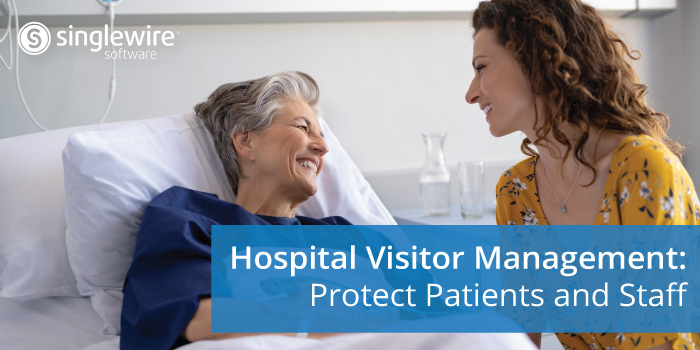The Need for Comprehensive Hospital Visitor Management
Hospitals face unique challenges in maintaining a secure environment due to their open nature. Healthcare organizations need to balance a welcoming environment with a secure facility to ensure violent intruders and other disruptions do not interfere with delivering excellent patient care. Implementing a comprehensive hospital visitor management system can help ensure the safety of both patients and staff with standardized check-in procedures and robust visitor screening to detect potential threats before they gain access to sensitive areas. In this blog, we will explore the importance of a hospital visitor management system, the critical components of an effective system, and how these tools can create a safer healthcare environment.
The Importance of Hospital Visitor Management
In hospitals, unauthorized individuals can pose significant risks, including potential harm to patients, theft of medical equipment, and breaches of sensitive information. These threats make it imperative to validate guests who are visiting to prevent people from harming patients, staff, or operations. A hospital visitor management system can mitigate these risks by ensuring that only authorized individuals gain access to the premises by having guests present photo IDs and having them screened before being allowed to enter.
Without a formal check-in process, hospitals may rely on outdated methods such as paper sign-in sheets. These methods offer little in terms of security and reliability. Paper records can be easily manipulated, misplaced, or illegible, making it difficult to track who is on the premises at any given time. Furthermore, these records do not provide real-time insights or the ability to respond quickly to potential security threats.
Components of a Strong Visitor Management Solution
To address the unique security challenges faced by hospitals, a comprehensive visitor management solution should incorporate several key components:
- Digital Check-Ins and Identity Verification: Implementing a digital check-in system streamlines the process of monitoring and controlling access to the hospital. Digital solutions offer a structured and reliable method for verifying the identity of visitors. By utilizing digital check-ins and identity verification, hospitals can ensure that only authorized individuals enter the building. This enhances security and improves the efficiency and user-friendliness of the check-in process.
- Screening for Potential Threats: A critical aspect of hospital visitor management is the ability to screen guests against banned visitor lists and government watchlists. This proactive measure helps identify potential threats before they gain access to the premises. By integrating with national and international security databases, visitor management systems can flag individuals who may pose a risk, enabling security personnel to take appropriate action.
- Restricting Movements and Ensuring Compliance: In addition to controlling who can enter the premises, hospital visitor management systems can restrict where visitors can go once inside. By issuing badges that designate permitted areas, hospitals can prevent unauthorized individuals from accessing sensitive or restricted areas. This is particularly important in environments where certain areas contain confidential patient information or critical infrastructure. Establishing clear terms of entry is essential for setting expectations and ensuring that visitors behave appropriately while on the premises. By having guests sign terms of entry agreements, hospitals can communicate acceptable behaviors and outline the consequences of non-compliance. This helps create a secure and orderly environment, reducing the risk of incidents that could disrupt operations or pose a threat to patients and staff.
- Guest Notifications: In addition to screening for known threats, hospitals can enroll guests to receive notifications during their visits. This ensures that in the event of an emergency, the organization can promptly inform visitors so they can take necessary actions to protect themselves. For instance, during a fire or security threat, an automated system that can send alerts to all guests can significantly enhance overall safety.
- Real-Time Insights and Reporting: One of the standout features of modern hospital visitor management systems is the ability to provide real-time insights and comprehensive reporting. Knowing who is in the building at any given time is crucial for maintaining security and operational efficiency. Digital systems can generate detailed reports on visitor activity, including check-in and check-out times, areas visited, and any incidents that occurred during the visit. These insights can be invaluable for security audits and investigations, helping hospitals identify patterns and potential vulnerabilities. By maintaining a detailed record of all visitor activity, hospitals can continuously improve their security protocols and ensure their staff are prepared to address any potential threats.
Enhancing Hospital Security with Comprehensive Visitor Management
Investing in a reliable hospital visitor management system is crucial for protecting a facility and the patients and staff inside. By implementing a digital system, hospitals can enhance their ability to monitor and control access, screen guests, restrict movements, and ensure compliance with security protocols. With real-time insights and comprehensive reporting, hospitals can maintain a high level of security and be better prepared to respond to potential threats.
To learn more about how Singlewire Software can help protect your organization, visit our Visitor Aware page.
